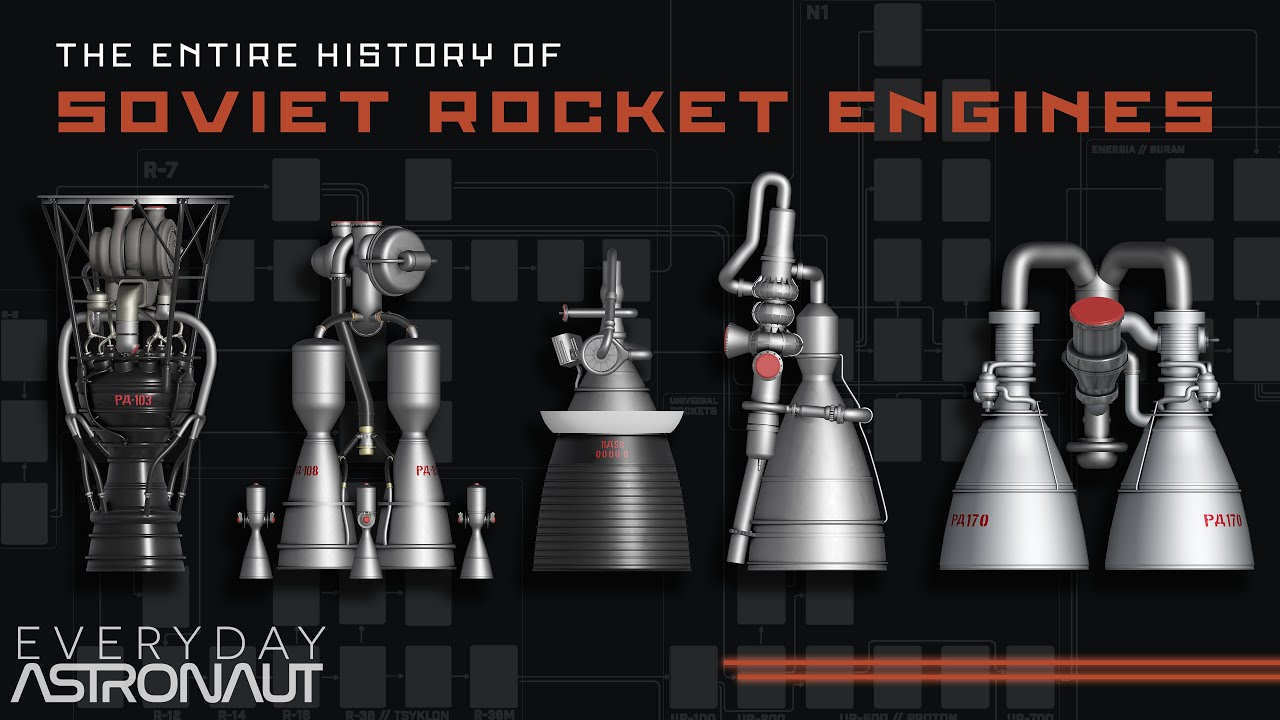This is a stunning achievement. Months in the making, Tim Dodd of Everyday Astronaut presents, in a 90 minute video, the complete history of every Soviet and Russian rocket engine which has flown to orbit, tracing the family tree of engines, some of which have their roots in the 1940s. A companion document, “Soviet Rocket Engines”, provides additional details, renderings and photographs of engines and the rockets that used them, and a comprehensive chart of all engines and their lineage.
This will help you to appreciate how fundamentally different aerospace research and development was in the Soviet Union compared to the West. In the West, generally a project would be proposed, funded, and then contractors would compete to design and build vehicles to meet the requirements of the procurement. Then component selection or development would proceed to provide propulsion, guidance, structures, etc. for the chosen bid.
In the Soviet Union, there were multiple competing design bureaux, each under the control of a chief designer, which received a relatively fixed budget for research and development. A given bureau would develop a design to the prototype or early testing stage, and then try to get buy-in to produce it by the military or civil “customers” who might use it. This meant that, for example, rocket engine development was not driven by the requirements of the users of the engines, but proceeded on a continual basis from the funding of the propulsion design bureau, regardless of specific applications for the engine. This resulted in a bewildering number, by Western standards, of different engine designs and variants being developed, including truly exotic designs including the RD-301 which used fluorine and ammonia propellants, the RD-501/502 that burned hydrogen peroxide and pentaborane, and the tri-propellant RD-701/704 that could mix kerosene and liquid hydrogen burned with liquid oxygen to provide high thrust for initial ascent and efficient propulsion outside the atmosphere. (None of these designs ever flew to orbit.)
One of the ironies of the space race is that the Soviet space program was composed of independent, competing development organisations providing alternatives to customers in a kind of market economy, while U.S. aerospace was much more centrally planned, with military services and NASA involved in the top-down design of systems and centrally planning the interactions among contractors and the design of their products.
